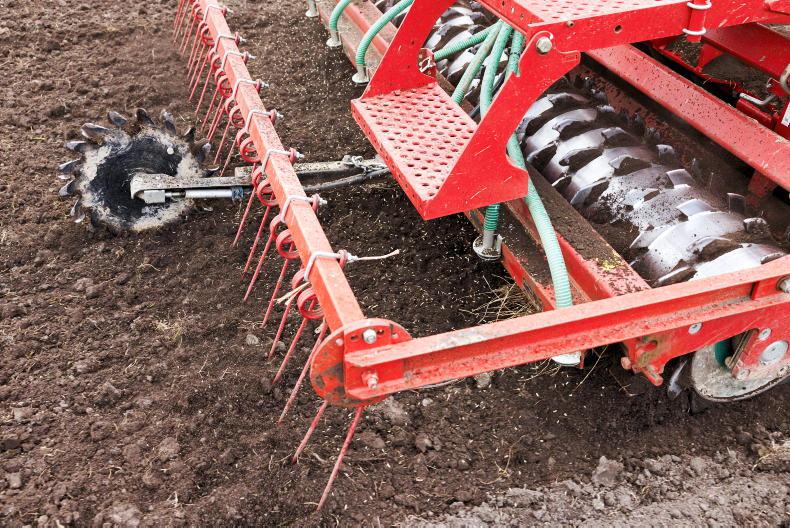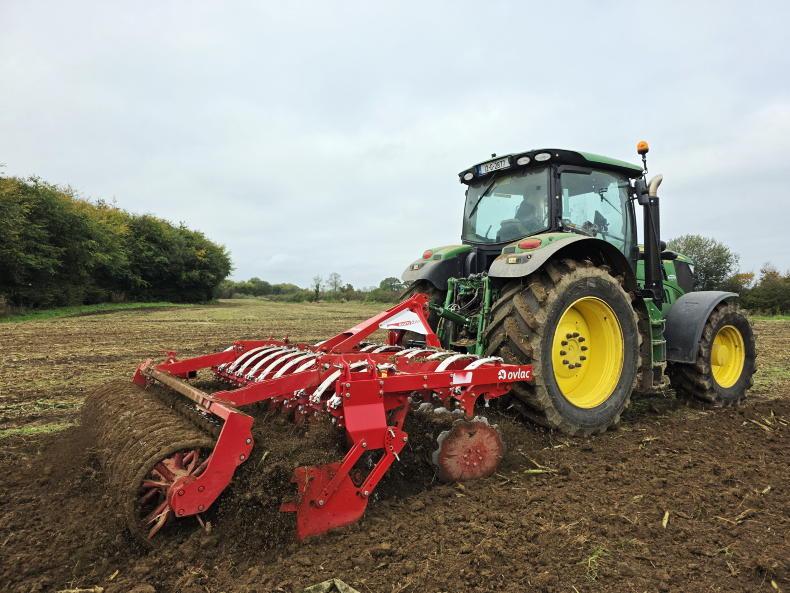1. Pick the right field
The best farmers will know in the previous autumn what fields they are planning to reseed the following spring. Identifying the poorest-performing paddocks and reseeding these will immediately bring up the average grass growth across the farm. Don’t be afraid about losing production while the field is out for reseeding, research shows that fields reseeded in the spring have the same or higher annual production, but have far higher production in the years following reseeding.
The best way to identify fields for reseeding is by looking at annual tonnage grown from PastureBase or Agrinet data. Other factors such as the number of grazings should also be considered, but keep in mind that paddocks grazed late in the spring will have fewer total grazings than those grazed early in spring.
Having said all of the above, try to rectify any other problems the paddock may have before reseeding. For example, if the field has poor soil fertility or poor drainage, reseeding will not fix those problems and the return from reseeding will be low.
2. Pick the right time
Conditions are perfect for carrying out reseeding at the moment, but it is still very early in the season. I would prefer to wait until mid- to late-April before sowing grass and clover seeds. Remember, grass and clover seeds are much smaller and less hardy than cereal seeds, so will need more kindness in the weather to get established. Spring reseeding is much better than autumn reseeding and pretty much essential if you want to get clover established.
In terms of timings, the first task is to spray off the old sward and you want to do this when as much of the old sward is present as possible, so as to get the best kill. For example, scutch grass is slower to emerge in spring than ryegrass and slower to come back after being grazed, so there needs to be a cover of at least 1,000kg DM/ha, or ideally more, before spraying with glyphosate.

Ploughing on nitrates derogation farms has to be done between 1 March and 31 May
3. Choose a suitable method
It used to be that you couldn’t really go wrong with sowing grass seeds, but that’s no longer the case, as summers have become much drier. Getting clover established along with new grass varieties is also far more important now than it was, and in many cases farmers are reseeding for clover, as opposed to just looking to replace the existing ryegrass. The thing about clover is that it needs to be placed on or very close to the surface. It does not like to be buried, so a fine and firm seedbed is critical. Too often, seed beds are too fluffy prior to sowing meaning the clover seeds get buried too deep and have poor establishment.
It is fair to say that all of the established methods work, plough and one-pass, one-pass, disc, min-till, slot seeding, etc. If using min-till methods there needs to be adequate time given between spraying off and subsequent cultivation for the old sward and root system to die away. Remember, a new seedling has to grow both ways – leaves and roots – so a good seedbed is essential.
4. Pick good varieties
If going to the trouble and expense of reseeding, it is foolish to then use inferior varieties in the mixture. The Pasture Profit Index and Recommended list published on page 46 is a good guide to variety performance under independent Department of Agriculture or Teagasc trials. Using varieties that haven’t been independently assessed under a simulated grazing system is risky, because you really don’t know what you are buying and how suited it is to Irish conditions.
Select varieties based on the intended use. For example, if the field is intended for intensive grazing, then pick varieties that have good grazing traits. If the field is primarily used for silage, then use varieties with good silage yields.
5. Look after reseeds
Management of reseeds doesn’t stop as soon as the seeds are up. White clover takes constant management throughout its life, but more so in the first 18 months after establishment, as the stolon root system is still getting established.
Regular tight grazing and maintaining a low cover over the first winter is key for clover establishment. A post-emergence spray is critical to control annual weeds such as docks, and this should be carried out six weeks after sowing, or when the clover seedlings are at the three-leaf stage. New seeds are very dependent on phosphorus and potash for root growth. The rule of thumb is to apply three bags/acre of 10:10:20 at sowing and follow up with additional nitrogen after establishment.

Sort out any soil fertility or drainage issues prior to reseeding.
1. Pick the right field
The best farmers will know in the previous autumn what fields they are planning to reseed the following spring. Identifying the poorest-performing paddocks and reseeding these will immediately bring up the average grass growth across the farm. Don’t be afraid about losing production while the field is out for reseeding, research shows that fields reseeded in the spring have the same or higher annual production, but have far higher production in the years following reseeding.
The best way to identify fields for reseeding is by looking at annual tonnage grown from PastureBase or Agrinet data. Other factors such as the number of grazings should also be considered, but keep in mind that paddocks grazed late in the spring will have fewer total grazings than those grazed early in spring.
Having said all of the above, try to rectify any other problems the paddock may have before reseeding. For example, if the field has poor soil fertility or poor drainage, reseeding will not fix those problems and the return from reseeding will be low.
2. Pick the right time
Conditions are perfect for carrying out reseeding at the moment, but it is still very early in the season. I would prefer to wait until mid- to late-April before sowing grass and clover seeds. Remember, grass and clover seeds are much smaller and less hardy than cereal seeds, so will need more kindness in the weather to get established. Spring reseeding is much better than autumn reseeding and pretty much essential if you want to get clover established.
In terms of timings, the first task is to spray off the old sward and you want to do this when as much of the old sward is present as possible, so as to get the best kill. For example, scutch grass is slower to emerge in spring than ryegrass and slower to come back after being grazed, so there needs to be a cover of at least 1,000kg DM/ha, or ideally more, before spraying with glyphosate.

Ploughing on nitrates derogation farms has to be done between 1 March and 31 May
3. Choose a suitable method
It used to be that you couldn’t really go wrong with sowing grass seeds, but that’s no longer the case, as summers have become much drier. Getting clover established along with new grass varieties is also far more important now than it was, and in many cases farmers are reseeding for clover, as opposed to just looking to replace the existing ryegrass. The thing about clover is that it needs to be placed on or very close to the surface. It does not like to be buried, so a fine and firm seedbed is critical. Too often, seed beds are too fluffy prior to sowing meaning the clover seeds get buried too deep and have poor establishment.
It is fair to say that all of the established methods work, plough and one-pass, one-pass, disc, min-till, slot seeding, etc. If using min-till methods there needs to be adequate time given between spraying off and subsequent cultivation for the old sward and root system to die away. Remember, a new seedling has to grow both ways – leaves and roots – so a good seedbed is essential.
4. Pick good varieties
If going to the trouble and expense of reseeding, it is foolish to then use inferior varieties in the mixture. The Pasture Profit Index and Recommended list published on page 46 is a good guide to variety performance under independent Department of Agriculture or Teagasc trials. Using varieties that haven’t been independently assessed under a simulated grazing system is risky, because you really don’t know what you are buying and how suited it is to Irish conditions.
Select varieties based on the intended use. For example, if the field is intended for intensive grazing, then pick varieties that have good grazing traits. If the field is primarily used for silage, then use varieties with good silage yields.
5. Look after reseeds
Management of reseeds doesn’t stop as soon as the seeds are up. White clover takes constant management throughout its life, but more so in the first 18 months after establishment, as the stolon root system is still getting established.
Regular tight grazing and maintaining a low cover over the first winter is key for clover establishment. A post-emergence spray is critical to control annual weeds such as docks, and this should be carried out six weeks after sowing, or when the clover seedlings are at the three-leaf stage. New seeds are very dependent on phosphorus and potash for root growth. The rule of thumb is to apply three bags/acre of 10:10:20 at sowing and follow up with additional nitrogen after establishment.

Sort out any soil fertility or drainage issues prior to reseeding.












SHARING OPTIONS